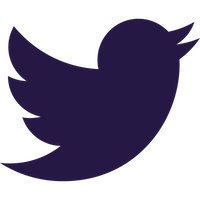What makes a great press release?
Appearing in the media can super charge your business and take it to the next level.
I’ve worked with clients who have had – and continue to have – amazing success from being featured in the press.
This includes a start-up technology company that received a multi-million-pound investment after appearing in The Times and a vegan entrepreneur whose story went viral and attracted an audience of buyers off the back of one story.
Pretty powerful right?
Getting your story in the media offers access to an audience far bigger than your usual social media network, and the key is writing a fantastic press release that can’t be ignored.
What is a press release?
It’s a one-page document that shares breaking news about your company. They’re sent to journalists in the hopes of them publishing your story in their newspaper, magazine printed or online.
They tend to focus on an announcement – launching a new product or service, hiring new people, expanding your business, etc.
Very few people get it right, so if you learn how to do it, you’ll stand out and have a better chance.
You need a strong story!
First thing’s first. If you want to get the attention of the press, you need to think like a journalist. That means that the first job when writing a press release is to identify the “news hook”.
A press release is not a sales pitch. You want to tell a story that’s of interest to the journalist and their audience.
Think around the edges of your business – journalists are not interested in your business.
You need to tell stories that people want to hear, not the ones that you want to tell.
You’ve got to think outside the box!
What you’re trying to do with your story is provide a compelling hook but also position your business so that it supports what you’re trying to achieve. It is a balancing act.
7 simple steps to writing a press release
Now you’re ready to buckle down and write your release. Here are the 7 steps I use to get the job done.
1. Compelling headline
Your headline should grab the attention of your audience. Your headline will also be your email subject line, so you want to be interesting enough for the journalist to want to open it. They’re very busy and short on time, some receive up to 600 email each day, so you need to stand out. Top tips:
- Write as if it were a front-page article
- Answer who cares
- Paint a picture
Your headline needs to pique the journalist’s curiosity.
2. Power-packed first paragraph
Your whole story must be summed up in your first paragraph, including:
- Your angle or a hook. This is what will get your audience (and journalist) interested.
- The 5 W’s (as many as are relevant) – who, what, when, where, why. It’s an old school journalism tip, but it’ll make sure your release is informative.
- The reason for a reporter or editor to care.
3. Write 2 – 5 strong body paragraphs
The next several paragraphs should tell the complete story (in a concise way). The most important supporting details should be included. Each paragraph should be concise, ideally keeping your release to under one page.
4. Include Quotes that show personality
Quotes don’t have to be complicated. You want them to have personality and to be a bit edgy.
If you find yourself writing words like “We’re delighted/proud/passionate” delete them. Journalists don’t give two hoots about how pleased you are.
Remember, quotes are the only parts of a release the media cannot change. So, make sure you use them wisely.
5. Include pictures or video
Images drive audience engagement which is the key for online media. Without strong visual storytelling, the media will struggle to attract readers, so journalists are always on the lookout for strong high-quality pics. I’m also seeing more requests for videos which will just increase.
6. Include contact information
May sound obvious but remember to include your email, mobile number and website.
7. Include your boilerplate copy
‘Boilerplate’ is a fancy PR term for company overview so include a couple of sentences explaining who you are and what your company is about.
What could PR do for you?
Thinking back to the two examples I mentioned at the beginning, what could press coverage help you to do…
- Build your brand
- Attract new customers and new audiences who may never have thought about you
- Position you as an expert in your field
The possibilities are endless!




